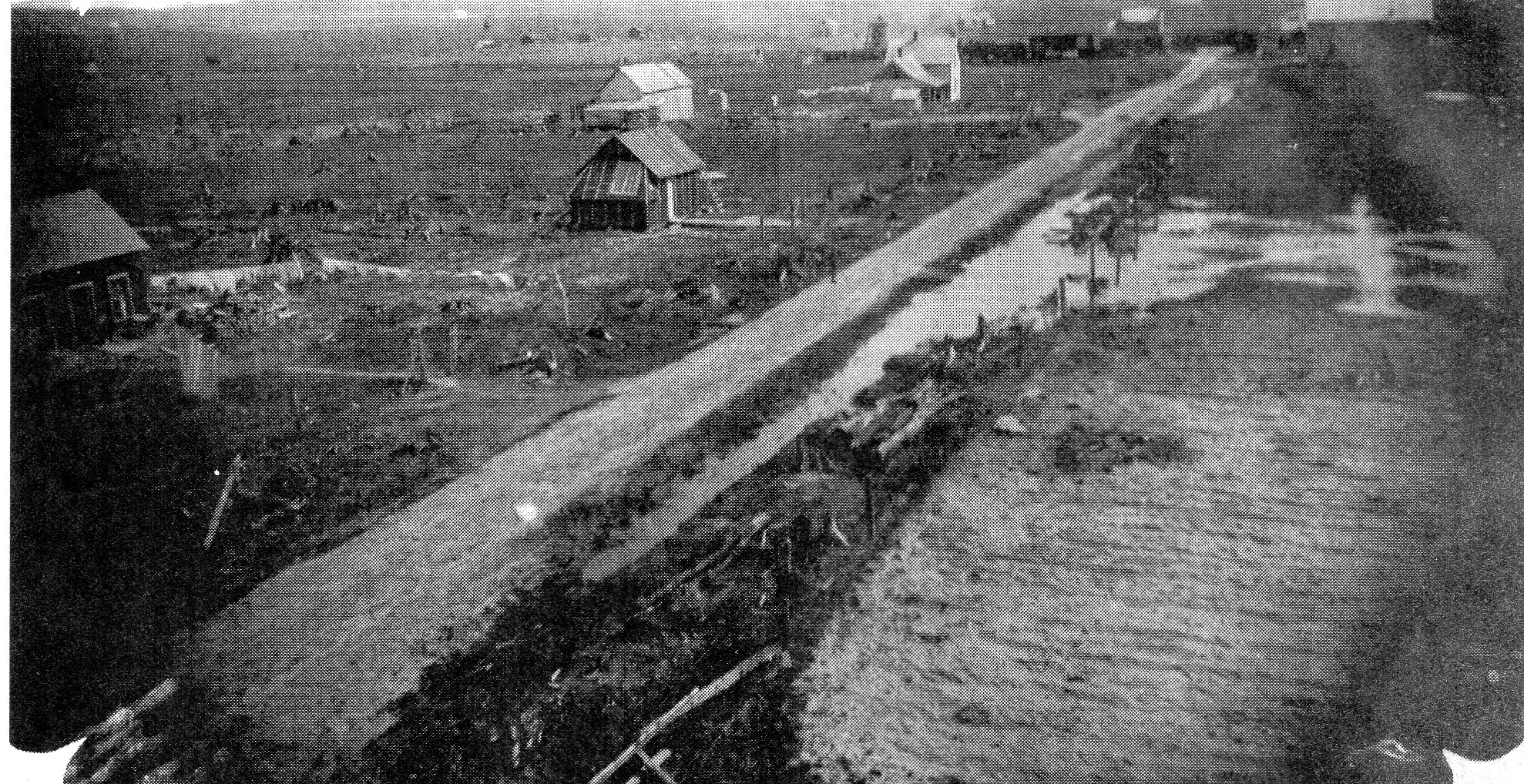
Submitted by Nute Chapman
From Onaway Outlook August 24, 2012

 |
Submitted by Nute Chapman From Onaway Outlook August 24, 2012 |
 |
Caption: The D & M TRAIN taking on water in Case, Michigan in the early 1900s.
 As we ride the rails this week let's start in Hawks or LaRocque (French for Hawks) and take the Detroit & Mackinac
(D & M) to the Valentine post office.
As we ride the rails this week let's start in Hawks or LaRocque (French for Hawks) and take the Detroit & Mackinac
(D & M) to the Valentine post office.
The first stop after leaving Hawks is the Lake May Siding. From here it is a short ride to Hurst and then you
will turn west and continue across the Sportsmen's Marsh and the headwaters of the Ocqueoc River system, continuing
mostly straight west to Pack Siding.
It is here that I must back up and talk about the "Lake Emma Grade." My
Dad worked at the Lake Emma fire tower for several years and at this time we would spend our summers at the Fedelman
Lake conservation cabin. My fondest memories come from the Sportsmen's Marsh. It is here that I picked up the
obsession for trapping that has never left my body.
There are not enough words to explain the fun of loading a canoe with a bundle of tag alder stakes and a trapping
basket loaded with No. I Victor Stoploss muskrat traps. A bag of McIntosh apples from Vally's store in Millersburg,
for bait, and a sandwich were also part of our equipment.
Dad would guide the canoe from one channel to another. We would stop at each active feed bed and place a trap or
sometimes two on a large feed bed. A small wedge of apple was tucked into the feed bed for bait. Waiting for the next
morning to check the traps was like a 10-year-old boy waiting for Christmas and hoping to get his first gun. After 65
years of trapping I still get the same feeling.
Back to the grade. Another memory is the bachelor, Jim McLennon, who lived in a cabin in a big stand of white pines.
As I remember, he was a caretaker for the Norway Pine Hunting Club. We sometimes brought him supplies from Valley's store.
His drinking water came from a spring on the grade that was called, "Jimmie's Spring." I can take you to it today.
Another part of the grade was sitting in the Lake Emma tower with Dad and marking the freighters on Lake Huron to see
which way they were going. A column of smoke that did not move was a fire, which was reported at once.
Back on the tracks we leave Pack Siding and stop at Rainey Lake; from here we move along and cross the Montmorency
County line and made a whistle stop in McPhee. From here we roll along to the Valentine post office, where the rails turn
west and go into Otsego County, where the tracks stopped. M-33 had not been though of yet. Today you can still see
where the grade crosses between the Clear Lake State Park and County Road 622.
Now if you stop in Millersburg and ask directions to the Lake Emma grade, I am sure someone will tell you. If you stop
at Valentine Lake or Chipmunk Corners and ask directions to the Valentine grade, someone will tell you.
I believe there is a sign along the grade that tells you so. But the real story is that from Hawks to the end of the tracks
in Otsego County the railroad was built, maintained and owned by the D & M Railroad. Call your grade what you want.
Now back to Hawks.
Leaving Hawks our first stop is at Bunton. From here it is nonstop to Millersburg, (the Big Cut was not a stop at this
time). We are now at the Depot in Millersburg. Millersburg was booming at this time. They had two saw mills, a lath mill,
the Michigan Hotel, the post office, a livery, a school, the Methodist Church, barber shop, the American House, the depot and a
bank at the corner of Center Street and Bryan Street.
The plat of Millersburg was both north and south of the railroad. There was an Inglis Addition, an Inglis Second
Addition and the plat of Ocqueoc between Center Street and Dewey Street.
The sections of land on the outskirts of Millersburg were owned by Robert Inglis, R. Holihan, C.R. Miller, J. Pepper,
F. Denny Lark and M. McDonald.
Information tells us that the depot was replaced in the fall of 1916 with the building that is now the Millersburg
Museum. Our hats are off to the village of Millersburg.
The train moves slowly as the next stop is at Providence, also called Austin Siding. Providence was only a stone's
throw from Millersburg as the Ocqueoc River separated the two.
Chandler Street came to the bridge and the Main Street of Providence was on the other side of the bridge. Providence
boasted five spurs going to their large saw mills, where Millersburg only had one spur. Providence had its own post
office.
The next stop will be at Case, where we will take on water from the water tower. Case was on the township line. The
post office was in Allis Township along with the shingle mill and several homes. More homes and the school were in
Case Township.
There were 14 homes in all. The William Arkwood Lumber Camp was on the 80 acres next to Case. William Arkwood was
the postmaster at Case at this time, and served for about eight years.
Our next ride will bring us into Onaway.
-Onaway Outlook, August 24, 2012, p.3.
Retyped by J. Anderson.